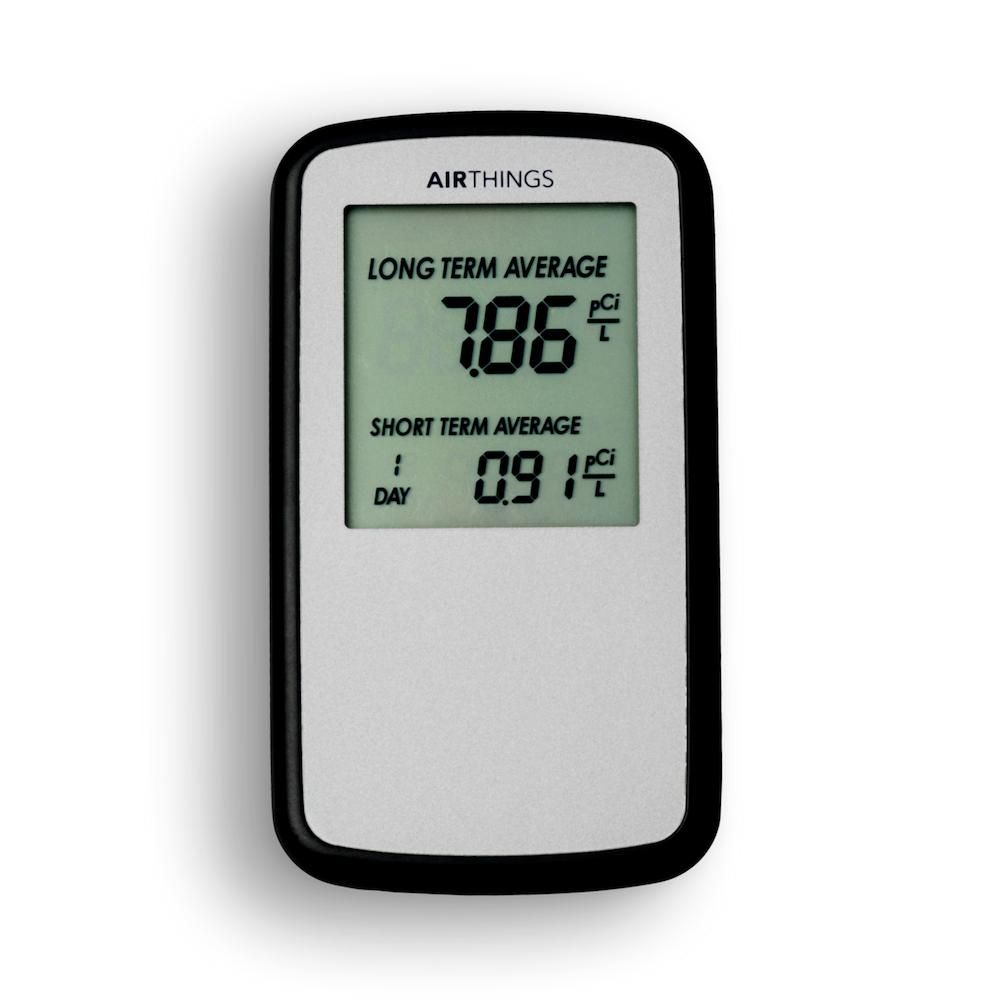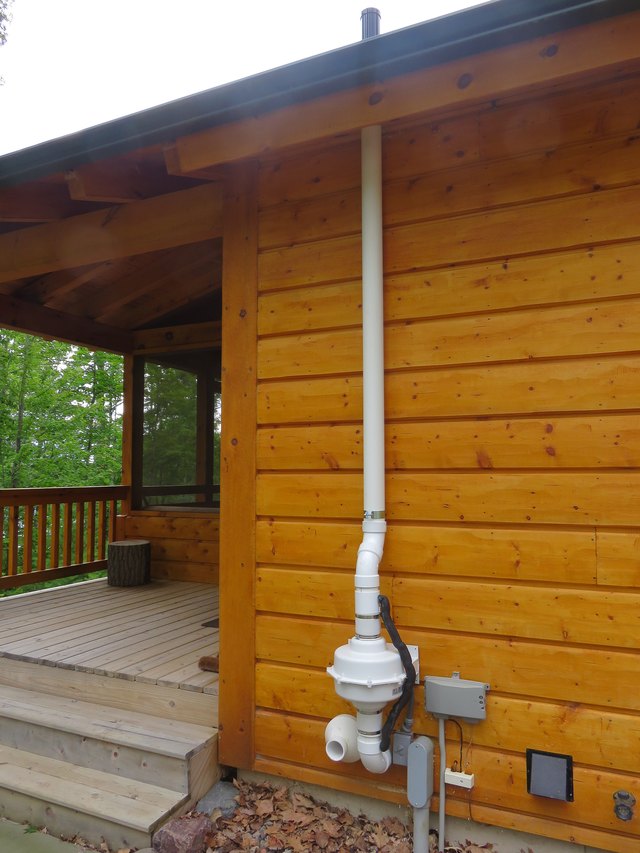High levels of radon in houses can be effectively remediated by sealing such entry factors and also by installing sufficient ventilation. Radon is a odor free and also contaminated gas that comes from trace quantities of all-natural uranium in the ground. Breathing interior air with high degrees of radon can result in lung cancer.The UNITED STATE Epa approximates that radon creates numerous thousands of avoidable lung cancer fatalities yearly. Radon is a radioactive honorable gas that comes from the decay of radium in the soil.
Once within, radon becomes trapped and can develop to risky levels. As you breathe in radon gas, little fragments obtain entraped in your lungs as well as launch small bursts of power (radiation) called alpha bits. These damages your lung tissue and also can bring about lung cancer cells gradually. This design which lots of scientists state is unwarranted as well as should be scrapped forecasts a worrying unwanted of cancers cells, also at reduced radon levels.
How do you get rid of radon gas in a basement?
The radon fans are guaranteed by manufacturers for 3 – 5 years. Their replacement cost, including installation, is usually $300 to $600. Homeowners are aware that the fan must run continuously 24/7, year after year. The typical estimate of the electricity cost is $150 per year.
Radon is a gas that takes place normally outdoors in harmless amounts. It's generated from the failure of uranium in dirt as well as rocks, as well as often it gets focused in residences improved soil with all-natural uranium down payments. It can be detected in schools, workplaces and homes going into structures via splits in floorings and also wall surfaces, construction joints or gaps around service pipelines, electric wires as well as sump pits. Old houses, new residences, homes with cellars and also residences without cellars can all have radon issues, although radon degrees are normally greatest in cellars or crawl areas.
Is a radon level of 3 safe?
No, not at all. But a claim that a company can completely eliminate radon from your home should be very closely scrutinized. By definition, Radon Mitigation is any process used to reduce radon gas concentrations in the breathing zones of occupied buildings.
The results of the long-lasting examination need to be made use of to figure out the requirement of radon reduction (reduction). If quicker outcomes are wanted, one more choice is to carry out a 2nd short term test.
The U.S. Division of Real Estate and Urban Development pdf symbol [1 MB] external icon recommends additional actions you can require to minimize high radon levels in your house as well as shield yourself from an enhanced threat of lung cancer. The UNITED STATE Division of Real Estate and also Urban Developmentexternal symbol suggests added actions you can take to reduce high radon degrees in your home and also safeguard yourself from an enhanced risk of lung cancer. The opportunities of obtaining lung cancer are greater if your house has raised radon levels as well as you smoke or shed gas that boost indoor particles.For more info, please see Health Threats of Radonexternal icon.
However, in enclosed areas like homes, it can build up to high degrees. High radon degrees can be a threat to the wellness of you and also your household. No level of radon direct exposure is considered totally risk-free, nevertheless the EPA just suggests decreasing radon degrees in your house if your long-term exposure averages 4 picocuries per litre (pCI/L) or higher. A pCI is a procedure of the price of radioactive decay of radon gas.
How often should you test for radon?
Living pattern changes Whenever there is a change in your home, you should perform local radon testing. It's also recommended that you test your home for radon at least twice a year too. If your tests come back unusually high, then you should order one or two more tests so that you can compare the results.
In spite of this issue, regional news terminals have actually found lots of school areas paying little focus to the potential radon dangers in their school structures. According to a report in 2014 from 7 News, thousands of institutions around the state have stopped working to either examination for radon direct exposure or repair issues after uncovering more than ordinary radon degrees in some classrooms. Radon gas leaks right into residences and frameworks from rock and soil below the structure. It can be discovered in new construction and older residences and buildings.
Will opening windows reduce radon?
Opening windows improves air circulation and ventilation, helping move radon out of the house and mixing radon-free outside air with indoor air. Opening basement windows helps reduce negative air pressure, diluting radon with clean outdoor air.
He goes so far as to claim that low-dose radiation might stop lung cancer. Doss points to animal studies revealing that reduced doses of radiation may help the body battle cancer by triggering the body immune system to clear away altered DNA. " These improved defenses actually minimize the DNA damages that would have occurred in lack of radon exposure," he claims.
Can I install my own radon mitigation system?
In most cases, pros charge about $1,500 to install a radon mitigation system, but you can do it yourself for only about $500 in materials. So if you're fairly handy and have some carpentry, plumbing and electrical skills, you can install your own system in a weekend and save yourself a thousand bucks!
Inside Male's Health:.
The majority of the moment radon is coming from the dirt under the home. No authorized sampling or screening methods exist to test granite for radon currently. Radon is of wider social interest because it is an Visit the website ubiquitous air toxin that goes into structures from the underlying soil. is a very hefty gas that produces damaging alpha particles as a by-product.
- Radon mitigation systems must be mounted by qualified or licensed radon mitigation specialists.
- Any one of these sources can launch the fatal gas right into your house, where it is caught and also can construct to dangerous degrees.
- Some people who are subjected to radon in drinking water may have boosted danger of obtaining cancer cells throughout their life time, particularly lung cancer.
- There are lots of points that can trigger the radon degrees in your house to transform, http://jaredshqh501.tearosediner.net/can-ceiling-fans-lower-radon and also the transforming seasons is one of them.
If screening shows degrees much less than 4 picocuries radon per liter of air (160 Bq/m3), after that no action is essential. For degrees of 20 picocuries radon per liter of air (800 Bq/m3) or higher, the homeowner need to think about some type of treatment to decrease interior radon degrees.
Is radon really a big deal?
Radon is a radioactive gas that has been found in homes all over the United States. It comes from the natural breakdown of uranium in soil, rock, and water and gets into the air you breathe. Radon typically moves up through the ground to the air above and into your home through cracks and other holes in the foundation.
How do you eliminate radon?
If a person has been exposed to radon, 75 percent of the radon progeny in lungs will become "harmless" lead particles after 44 years. When an alpha particle damages a cell to make it cancerous, the onset of lung cancer takes a minimum of 5 years but most often 15 to 25 years, and even longer.
What do you do if your house has radon?
Radon can seep into any home that is in contact with the ground. It is undetectable unless you perform a radon test. It is the second leading cause of lung cancer and according to the EPA and CDC, it kills more than 20,000 annually. It is not something you want in the home you are buying.
Can radon cause headaches?
Radon gas is odorless, colorless, tasteless and radioactive. Radon gas seeps into the home through radon entry points in the foundation. Because you can't smell radon gas, the only way to know if you have it in your home, office or school is to test for it.
Does Radon make you tired?
The more uranium there is, the more radon there is. That makes radon the second leading cause of lung cancer after smoking. But even minor symptoms like headaches, feeling unusually tired, itching or burning eyes, irritated skin, nasal congestion, a dry throat or nausea could be due to your home's indoor air quality.
Where is radon found in the home?
Radon is a radioactive gas that has been found in homes all over the United States. It comes from the natural breakdown of uranium in soil, rock, and water and gets into the air you breathe. Radon typically moves up through the ground to the air above and into your home through cracks and other holes in the foundation.
Who is most at risk of lung cancer?
The more uranium there is, the more radon there is. That makes radon the second leading cause of lung cancer after smoking. But even minor symptoms like headaches, feeling unusually tired, itching or burning eyes, irritated skin, nasal congestion, a dry throat or nausea could be due to your home's indoor air quality.
Would you buy a house with radon?
Radon is a naturally occurring radioactive gas which may be found in indoor environments such as homes, schools, and workplaces. Radon is the most important cause of lung cancer after smoking.
Why is radon bad for you?
Radon produces a radioactive dust in the air we breathe. The dust is trapped in our airways and emits radiation that damages the inside of our lungs. This damage, like the damage caused by smoking, increases our risk of lung cancer.
What kind of cancer is caused by radon?
Radon decays quickly, giving off tiny radioactive particles. When inhaled, these radioactive particles can damage the cells that line the lung. Long-term exposure to radon can lead to lung cancer, the only cancer proven to be associated with inhaling radon.

What causes radon?
Being exposed to radon for a long period of time can lead to lung cancer. Radon gas in the air breaks down into tiny radioactive elements (radon progeny) that can lodge in the lining of the lungs, where they can give off radiation. This radiation can damage lung cells and eventually lead to lung cancer.
Do all homes have some level of radon?
The EPA estimates the lifetime risk of radon-induced lung cancer for never-smokers at 7 per 1,000 people, compared with 62 per 1,000 for smokers exposed to a level of 4 pCi/L. Your risk goes up with your exposure to radon and cigarette smoke over time.
How View website bad is a radon level of 8?
The EPA strongly recommends radon mitigation if your radon levels are above 4 pCi/L. While radon levels below 4 still pose a health risk. They recommend you consider mitigation if your radon levels are between 2 and 4 pCi/L. They are quick to point out that there is no known safe level of radon.
Is radon something to worry about?
The average home has about 1.3 pCi/L of radon. Such levels aren't enough to worry about, but under the right conditions, they could make you sick. According to the EPA, a nonsmoker who was exposed to average levels of radon for a lifetime would have a 1 in 500 risk of developing lung cancer.
How long does radon stay in the air?
It can be found in all 50 states. Once produced, radon moves through the ground to the air above. Some remains below the surface and dissolves in water that collects and flows under the ground's surface. Radon has a half-life of about four days - half of a given quantity of it breaks down every four days.
